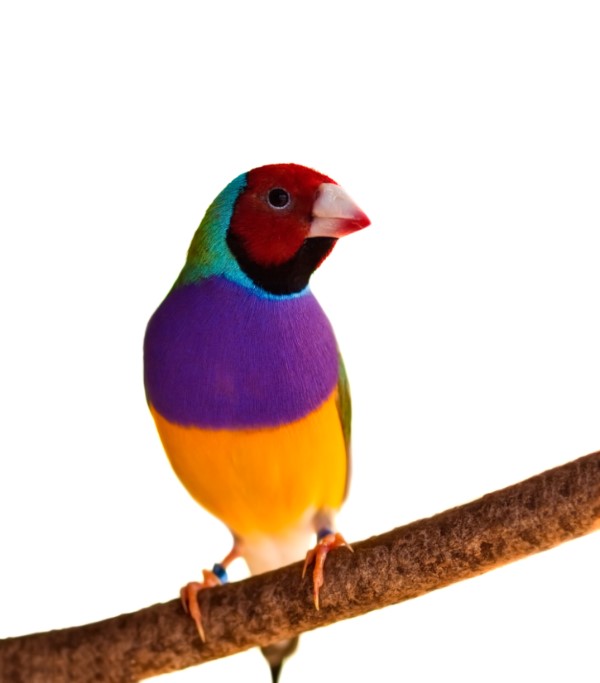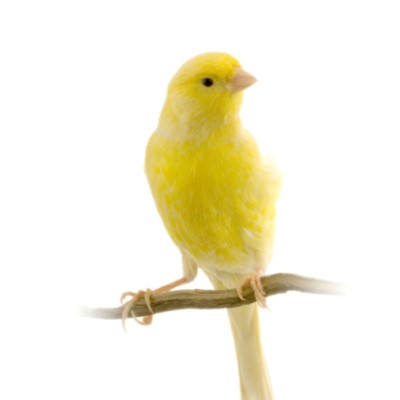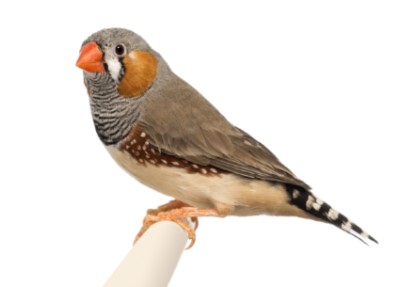Common Reasons for Surrender
Finches are surrendered because the owner died, the family moved to a new home, a couple has a baby, college student owners go off to school, or an owner marries and the spouse finds the Finch annoying.
Pros
This beautiful bird is a great socializer and capitalizes on those skills during courtship displays. Gouldian finches love to interact with one another, and the males have a pleasant chirping song, especially when showing off in mating season. This is one of the most colorful birds in existence today.
Cons
While this bird is beautiful to watch, a Gouldian Finch will become distressed if you try to handle her. If you are looking for a cuddly pet, the Finch will be a disappointment.
Diet
Most pet stores carry a standard finch mix that your finch will enjoy. Grit is not necessary, but be sure to include a cuttlebone. Hard boiled eggs with crushed egg shells will provide calcium that your finch needs. If your finch gets diarrhea, cut down on the amount of greens you are offering every day. The Gouldian particularly enjoys spray millet, a treat to be fed in moderation or it will cause your bird to gain weight.
In addition to dry seeds and pellets, the Zebra Finch needs sprouted seeds. Canary grass seed can be placed in warm water and set in a warm room to soak and sprout. Pellets are essential to this bird’s diet as well as tiny portions of fruits and green vegetables offered as treats daily.
Exercise
Like many birds, the Gouldian Finch likes to have one perch to sleep, another to eat, and still another to socialize or sing. To keep his feet healthy, provide a variety of perches of different types and textures, large enough so that his toes do not overlap.
Possible Health Issues
Gouldians are prone to mites and diarrhea. They can experience a balding on the head, which is usually due to a lack of iodine in their diet. In order to stay healthy, your finch will need artificial sunlight, such as a 5.0 UVB bulb. This bird can become easily distressed by new noises, extra company, other pets, extreme temperature changes, or a sudden change in their routine. Stress is the leading cause of illness in the finch. Egg binding can become a problem when breeding the Gouldian. The egg can become stuck in the birth canal if a bird is over-bred or is too young. If you suspect egg binding, take the Gouldian to the veterinarian because egg binding can be fatal.
Housing
Gouldian finches come from the tropical area of northern Australia where they live in flocks in the eucalyptus forests. If you want to please your Gouldian, place him in a cage with other gentle finches and a eucalyptus branch (leaves still intact). They also thrive on a Manzanita tree branch. The Gouldian needs at least 20 inches of flying space and prefers a horizontal cage more than a vertical one.
Grooming
Gouldians love to bathe and should be provided a bird bath every other day. A bird bath can be as simple as a shallow dish of filtered water.
Training
A Gouldian can sometimes be trained to perch on your finger. Most finches find human contact traumatic because in the wild they view humans as predators.
Entertainment
You may offer your Gouldian Finch a few toys. Some like them and so don’t. The greatest entertainment you will have is their splashy color, their gentle nature, their socialization with other birds, and of course their songs!
|
|
We want to thank Feathered Friends Forever, Harlem, Georgia; Avian Rescue Corporation (ARC), Concord, California; and Exotic Bird Hospital, Jacksonville, Florida, for help with this profile



